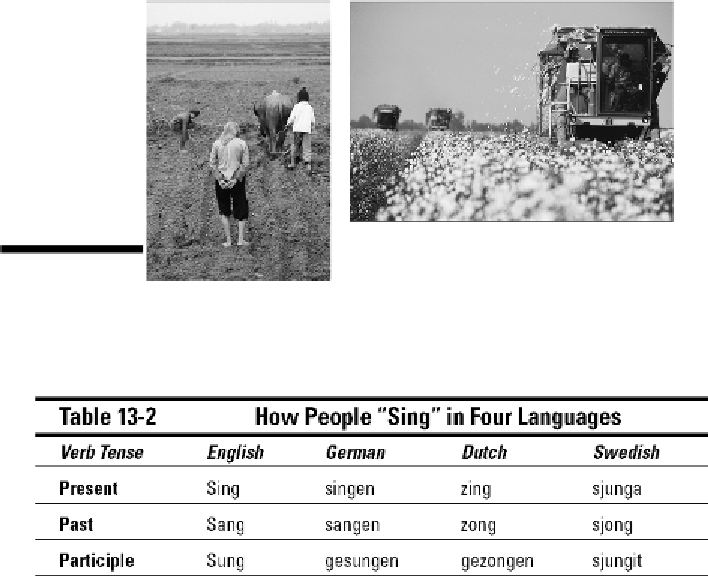Geography Reference
In-Depth Information
Figure 13-1a
and b:
When
peoples of differ-
ent culture prac-
tice agriculture,
they may trans-
form the natural
landscape into
very different cul-
tural landscapes.
Table 13-2 shows the conjugation of the verb “to sing” in four languages. Visual comparison of the
columns shows different spellings but also remarkable similarities.
The explanation for the similarities in the spellings is that these modern languages have a common
ancestral language that was spoken more than a thousand years ago in Central Europe.
But there came a time when members of this culture began to migrate, ultimately to occupy lands that
would later become England, The Netherlands, Sweden, and Germany. And in the process, groups of
significant size became isolated fromeach other more orless permanently.Patterns ofspeech were no
longershared.Pronunciationsbegantodriftapart,whichaccountsforthedifferencesinspellings.Mi-
grants encountered “strange” plants, animals, and physical environmental conditions for which there
were no words, so they invented new ones. Over time, therefore, the once-common language deve-
loped different dialects, which became different languages.
Adapting to new surroundings



